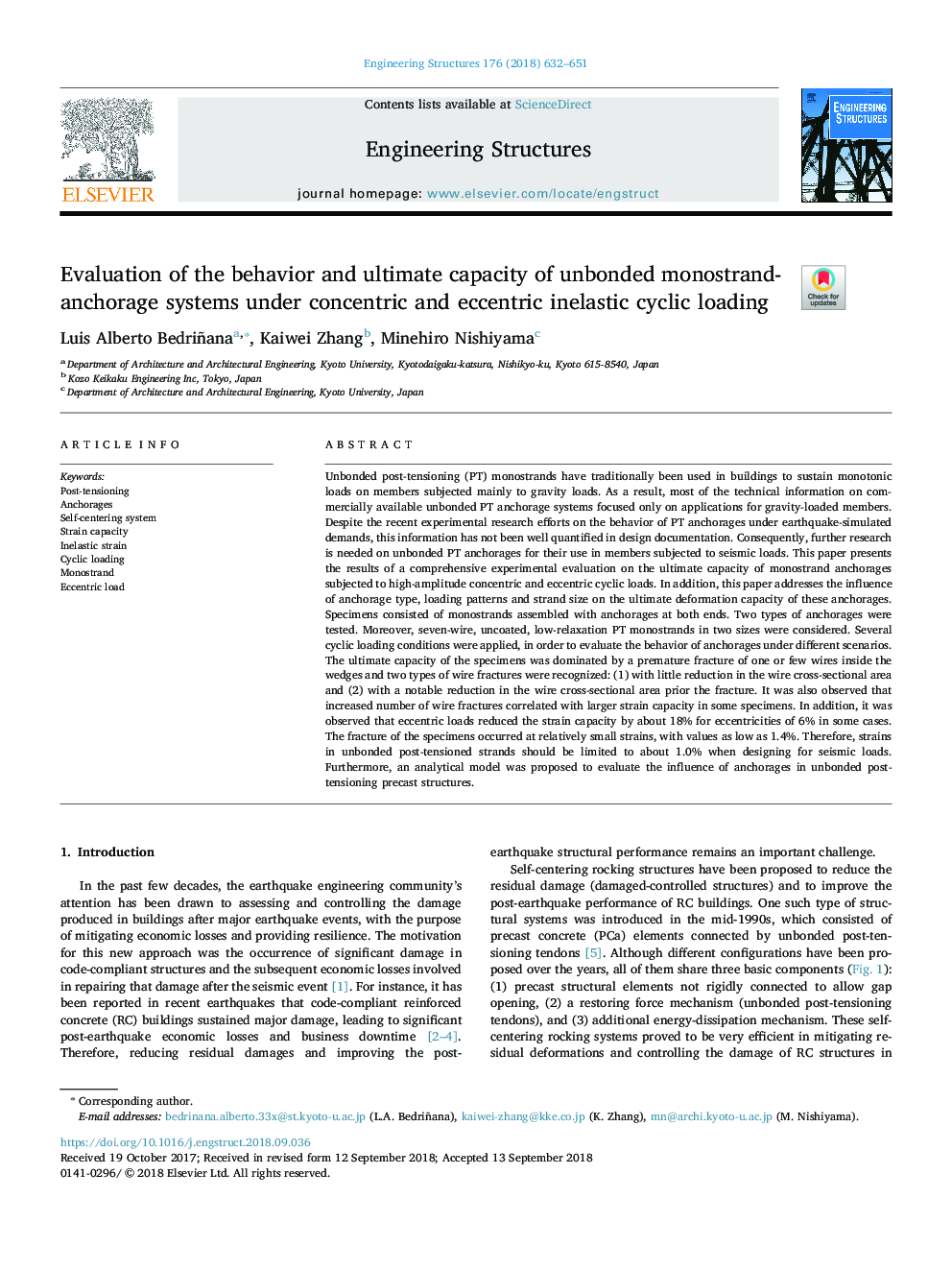| کد مقاله | کد نشریه | سال انتشار | مقاله انگلیسی | نسخه تمام متن |
|---|---|---|---|---|
| 11028924 | 1646695 | 2018 | 20 صفحه PDF | دانلود رایگان |
عنوان انگلیسی مقاله ISI
Evaluation of the behavior and ultimate capacity of unbonded monostrand-anchorage systems under concentric and eccentric inelastic cyclic loading
ترجمه فارسی عنوان
ارزیابی رفتار و ظرفیت نهایی سیستمهای تقویت شده مونویستر بدون انباشته تحت بارگذاری چرخه ناپیوستگی کانونی و غیرمتمرکز
دانلود مقاله + سفارش ترجمه
دانلود مقاله ISI انگلیسی
رایگان برای ایرانیان
کلمات کلیدی
بعد از کشیدن، لنگرگاه ها سیستم مرکز خودمراقبتی ظرفیت فشار، فشار انعطاف پذیر، بارگذاری سیکل، مونواسترند، بار غیر عادی،
موضوعات مرتبط
مهندسی و علوم پایه
علوم زمین و سیارات
مهندسی ژئوتکنیک و زمین شناسی مهندسی
چکیده انگلیسی
Unbonded post-tensioning (PT) monostrands have traditionally been used in buildings to sustain monotonic loads on members subjected mainly to gravity loads. As a result, most of the technical information on commercially available unbonded PT anchorage systems focused only on applications for gravity-loaded members. Despite the recent experimental research efforts on the behavior of PT anchorages under earthquake-simulated demands, this information has not been well quantified in design documentation. Consequently, further research is needed on unbonded PT anchorages for their use in members subjected to seismic loads. This paper presents the results of a comprehensive experimental evaluation on the ultimate capacity of monostrand anchorages subjected to high-amplitude concentric and eccentric cyclic loads. In addition, this paper addresses the influence of anchorage type, loading patterns and strand size on the ultimate deformation capacity of these anchorages. Specimens consisted of monostrands assembled with anchorages at both ends. Two types of anchorages were tested. Moreover, seven-wire, uncoated, low-relaxation PT monostrands in two sizes were considered. Several cyclic loading conditions were applied, in order to evaluate the behavior of anchorages under different scenarios. The ultimate capacity of the specimens was dominated by a premature fracture of one or few wires inside the wedges and two types of wire fractures were recognized: (1) with little reduction in the wire cross-sectional area and (2) with a notable reduction in the wire cross-sectional area prior the fracture. It was also observed that increased number of wire fractures correlated with larger strain capacity in some specimens. In addition, it was observed that eccentric loads reduced the strain capacity by about 18% for eccentricities of 6% in some cases. The fracture of the specimens occurred at relatively small strains, with values as low as 1.4%. Therefore, strains in unbonded post-tensioned strands should be limited to about 1.0% when designing for seismic loads. Furthermore, an analytical model was proposed to evaluate the influence of anchorages in unbonded post-tensioning precast structures.
ناشر
Database: Elsevier - ScienceDirect (ساینس دایرکت)
Journal: Engineering Structures - Volume 176, 1 December 2018, Pages 632-651
Journal: Engineering Structures - Volume 176, 1 December 2018, Pages 632-651
نویسندگان
Luis Alberto Bedriñana, Kaiwei Zhang, Minehiro Nishiyama,
